India – the land of festivities
India is the land of festivals. While Diwali, Holi, Dussehra may be celebrated with much fervor, there are many festivals that are unknown to the world but very much celebrated in our country.
Fairs and festivals are an important part of the religious and cultural life of the Indian tribals. The endless succession of mountain ranges that vanish in the dark blue sky, the beauty and majesty of the snow peaks which seems to touch the stars in the background, all have left their impression on the religious ceremonies, festivals and other fairs of the tribes. These festivals and fairs are related with local Deities, Gods and Goddesses. Seasons have also played an important part and each season has its own appropriate festivals. The ceremonies in each season are largely influenced by the climatic needs or other characteristics of particular season.
The fairs and festivals are also related with the joys and jovial sentiments and amusements of the hill tribes. These festivals play a major role to build up strong social contacts, strengthen community relations and maintain social solidarity. Most of the festivals of tribes are derived from the sectarian Hinduism of the period after the immigration of the population from the plains to this region.
Discussed below are few of the major festivals :
Kumbh Mela is a very big fair and the largest gathering of Hindu pilgrims, celebrated every twelve years at four holy places Prayag (Allahabad), Haridwar, Ujjain and Nashik. The grand event held by rotation, on the banks of the sacred river Godavari, Shipra, Yamuna and The Ganges.
During this big fair Hindus pilgrims gather at the sacred Ganges river for holy bath. The major attractions of this biggest religious fair are the procession of Naga Sadhu “Holy Men of India” and procession of Akharas marching. This is also considered to be the largest peaceful gathering in the world.
Kumbh Mela is :-
– Mass Hindu pilgrimage of faith in which Hindus gather to bathe in a sacred river.
– Kumbha means a pitcher and Mela means fair in Sanskrit.
– On important bathing dates, millions of pilgrims take bath on the banks of the holy Sangam.
– It is held every third year at one of the four places by rotation.
– The site of the observance rotating between four pilgrimage places on four sacred rivers: at Haridwar on the Ganges River, at Ujjain on the Shipra, at Nasik on the Godavari, and at Prayag (Allahabad) at the confluence of the Ganges, Jamuna, and the mythical Sarasvati.
– Approximately 80 million people had attended on 14 Feb’13.

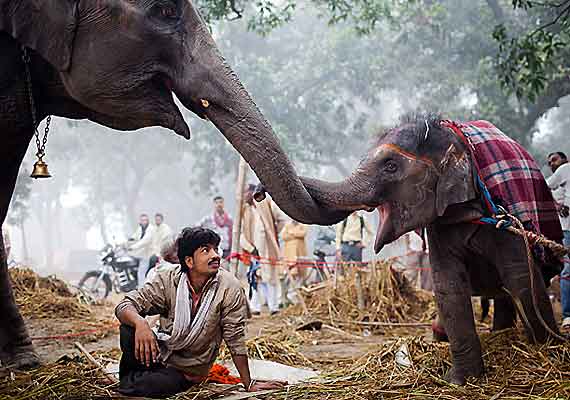
Sonepur Cattle Fair held (November) on full moon day in Bihar, on the confluence of river Ganges and Gandak. Sonepur fair is also known as the Harihar Chhetra Mela,The Sonepur Fair is the only one of its kind in the world.
Haathi Bazaar is one of the major attraction of the fairs,where elephants are lined up for sale, Apart from this all breeds of buffaloes, donkeys, ponies and birds are also available for sale. The largest animal fair in Indian attracts peoples from all around the Asia.
Held on Kartik Poornima (the full moon day) in the month of November in Sonepur, Bihar, on the confluence of river Ganges and Gandak.
Salient Features :
– It hosts one of the world’s largest animal fairs.
– Biggest cattle fair of Asia and stretches on from fifteen days to one month.
– Also known as Harihar Kshetra Mela, it’s a month-long fair where elephants, camels, cows, buffaloes, horses, dogs, birds, sheep, rabbits, guinea pigs are traded.
– Its origin dates back to ancient times when Emperor Chandragupta Maurya used to buy elephants and horses.
Pushkar Fair is one of the world’s largest camel fairs, held (October-November) in the oldest city of Rajasthan “Pushkar”. The Pushkar camel fair attracts large number of visitors from all around the world, especially from Israel. The biggest fair of Rajasthan held on the banks of the Pushkar Lake, It is also an important tourist attraction. The competitions such as the matka phod and longest mustache and the Hot air balloon are the few very special experience to enjoy
Annual five-day camel and livestock fair, held in the town of Pushkar in the Ajmer district of Rajasthan.
Salient Features :
– One of the worlds largest camel fairs and livestock fair.
– The fair attracts thousands of livestock dealers, who bring incredible numbers of camels, horses and cattle.
– Competitions such as the “matka phod”, “longest moustache”, and “bridal competition” are the main draws for this fair which attracts thousands of tourists.
– This is also an occasion for Hindu pilgrims to take a dip in the sacred Pushkar Lake.
– Around 50,000 camels which are sold, decorated, shaved and raced every year.
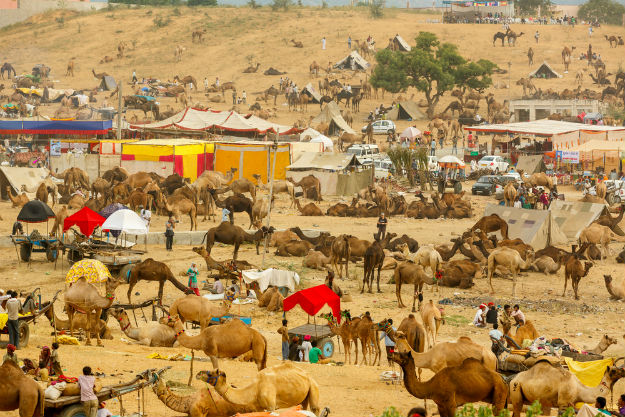
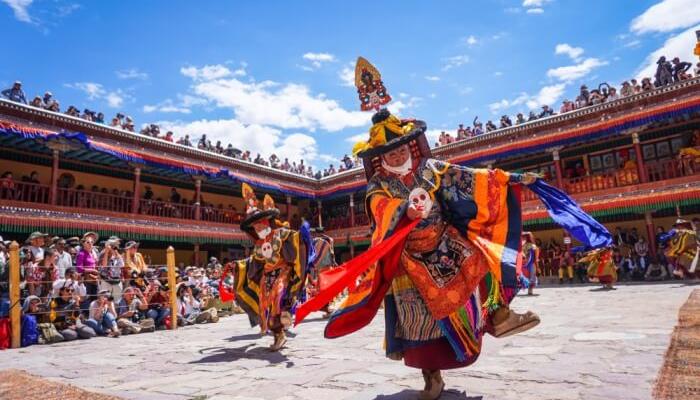
The Hemis Gompa festival is a religious fair and one of the most auspicious Occasions for the of Buddhist community in India. The grand fair held in the month of January/February at the world’s famous Hemis Gompa “the biggest Buddhist monastery” located in Ladakh. The famous Hemis Gompa is surrounded by mountain rocks and concealed inside the Hemis National Park.
Salient Features :
. Celebration on the birth anniversary of spiritual leader Padmasambhava, the founder of Tibet Tantric Buddhism in Hemis, Ladakh (Leh).
– It falls on the 10th day of the fifth month of the Tibetan lunar calendar.
– Celebrated across two days and is marked by a huge, colorful fair.
– A solemn parade is initiated by pre-Lamaism priests dressed in rich robes of china silk and brocade with odd tall tufted hats.
Kolayat Fair also known as Kapil Muni Fair is the another largest cattle fair held (September-October) in Bikaner district of the Royal state Rajasthan. The major attraction of the fair is when thousands of devotees take a sacred dip and put several lit oil lamps to float in the calm waters of the Kolayat lake. The Royal state of India also host Desert Festival of Jaisalmer,Nagaur fair and the most famous camel Festival in Bikaner.
Largest fair of Bikaner, the Rajasthan Kapil Muni Fair is held on Kartik Poornima.
Salient Features :
– Kolayat is an historical centre of pilgrimage where the Vedic sage, Kapila is believed to have shed his body under a Peepul tree.
– During the Kolayat Fair, all the 52 ghats are beautifully decorated.
– It holds as much significance as spending ten years at any other holy place.
– It is mainly associated with the birth of the Ganges river.
– It will be a great sight for the tourists to see hundreds of lighted lamps floating in the lake.
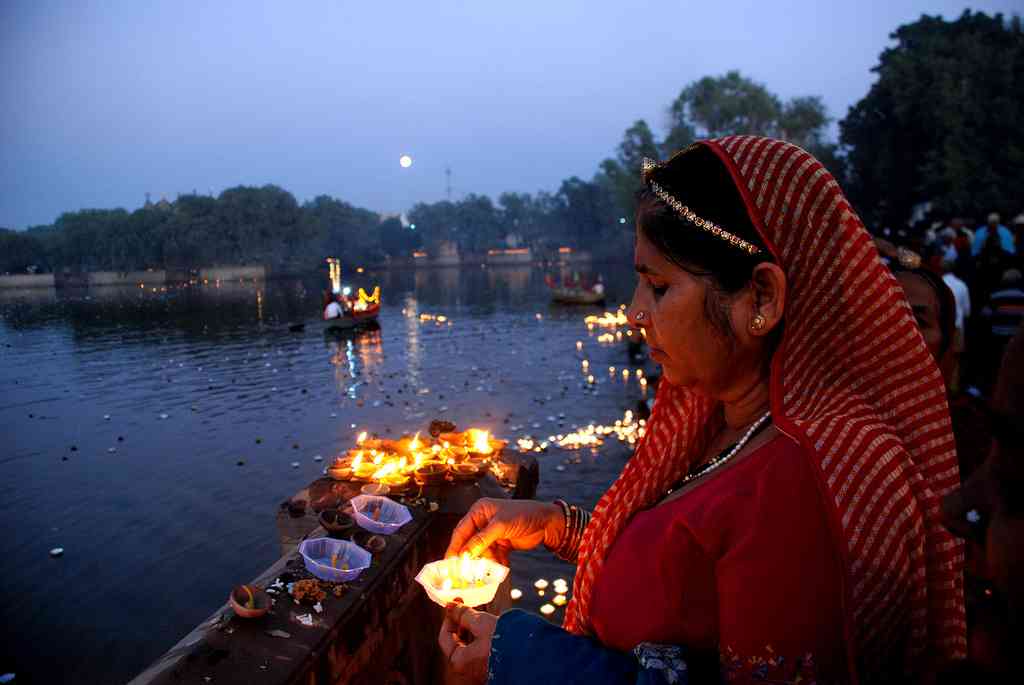
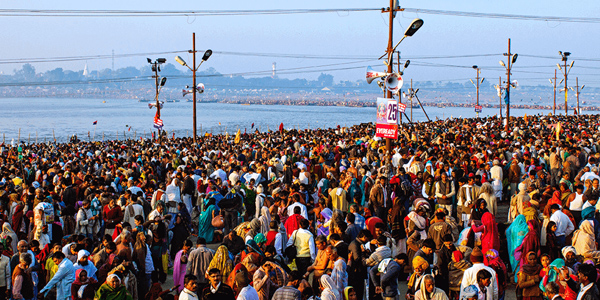
Chandrabhaga Mela is also known as Magha Saptam Mela, A grand fair is held (February) at Khandagiri near Bhubaneswar Orissa. The important fair and festival is celebrated every year during the full moon phase at the sacred Chandrabhaga River. During the seven day fair thousands of pilgrims gather to bathe in the holy Chandrabhaga River. The famous Konarak Sun Temple, Math and Archaeological Museum are the best sightseeing of the tribal state Magha Saptami which is also called Chandrabhaga Mela is the most popular festival which fall in the month of February.
Salient Features :
– This day is specifically set aside for the worship of the Sun God at Konark.
– It is held at Jhalrapatan, situated at a distance of about six kilometers from Jhalawar, in the month of Kartik (the full moon night).
– One of most popular and colourful festival of the place when lakhs of pilgrims visit Konark to observe the festival.
Gangasagar pilgrimage and fair is the second largest congregation of mankind after the holy Kumbha Mela. The big religious fair held annually where the holy river Gange meet the Bay of Bengal in West Bengal. During the time of fairs and festivals thousands people come for holy bath
Largest fair celebrated in West Bengal.
Salient Features :
– Located on an island in the Sunderbans, about 80 km south of Kolkata.
– It is held every year on the occasion of Makar Sankranti and draws devotees from all over the country.
– A dip in the water at this place, during Gangasagar Mela, is considered to be extremely sacred. On the day of Makar Sankranti (January 14), when the sun makes a transition to Capricorn from Sagittarius, it is said that the bath becomes a holy source of salvation.
– After the holy dip, the pilgrims offer ‘Puja’ at the Kapil Muni Temple or Ashram. It is a charming tourist destination, which attracts both pilgrims and adventure lovers.
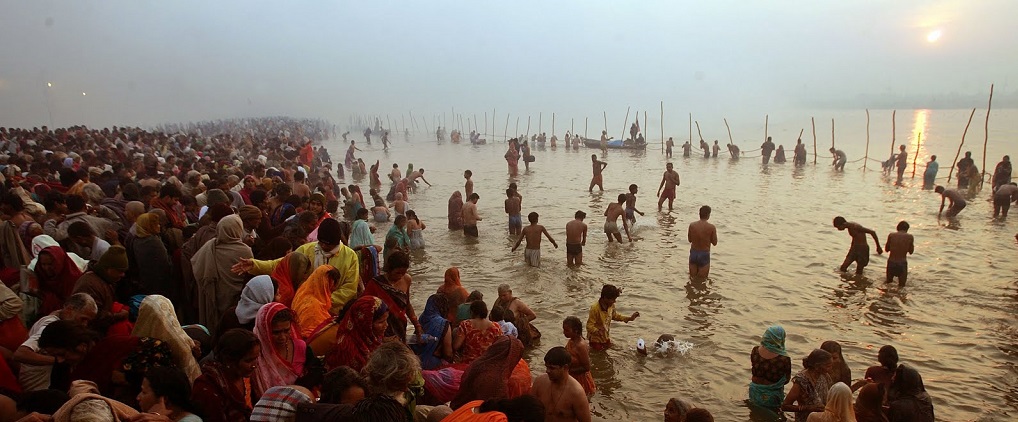
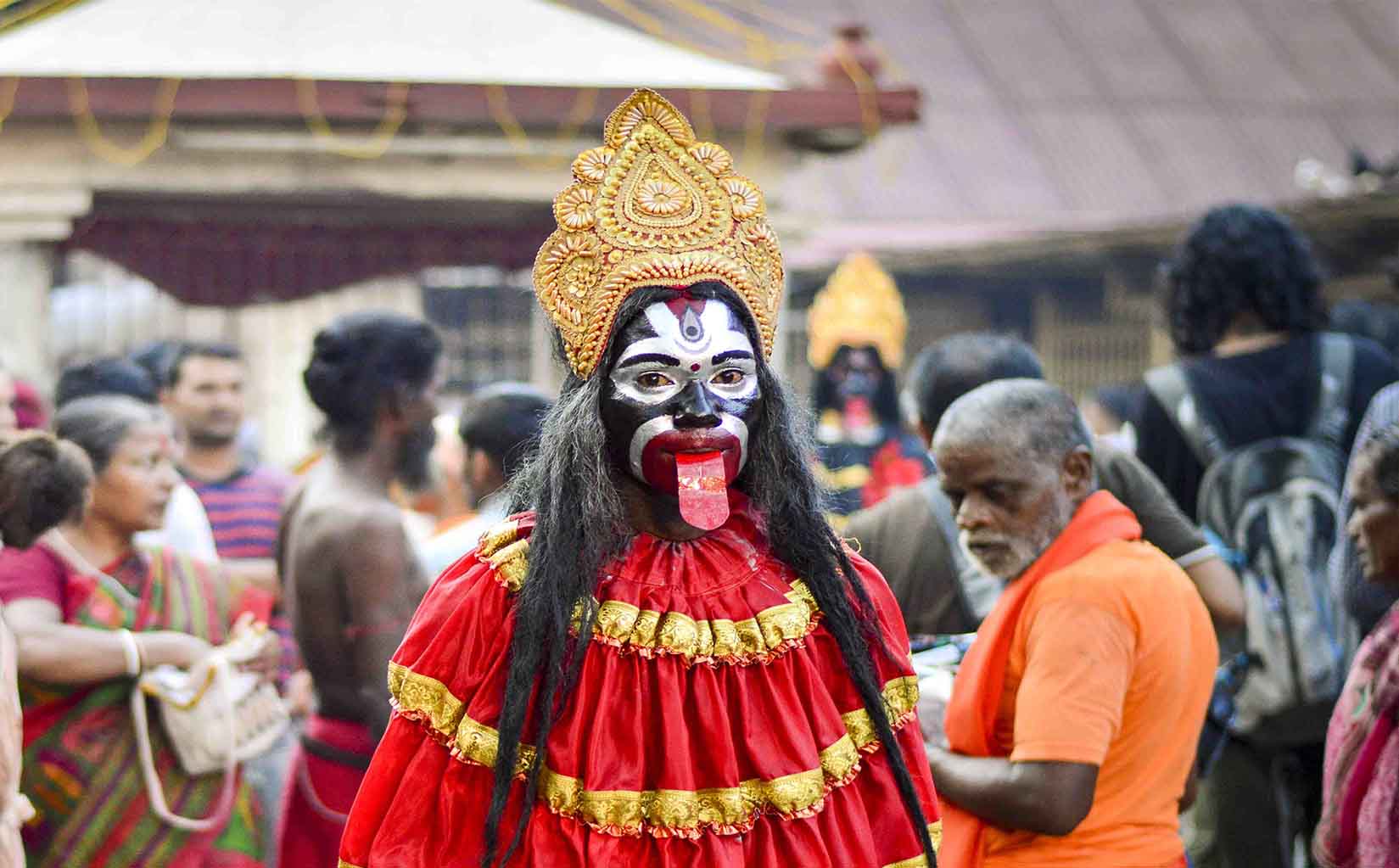
The Ambubasi Fair is one of the numerous religious fairs and festivals celebrated across India. The three-day traditional fair is organized every year during monsoon in the Kamakhya temple at Guwahati, Assam. Tens of thousands of devotees from different parts of the country thronged the Kamakhya Temple for the three-day traditional fair.
Ambubachi Mela of Kamakhya Dham is one of the significant fairs and festivals celebrated in India.
Salient Features :
– This mela is held every year during monsoon in the Kamakhya temple at Guwahati that happens to fall during the Assamese month Ahaar, around the middle of June, when the Brahmaputra river is in spate.
– It is the celebration of the yearly menstruation course of goddess Kamakhya.
– Thousands of followers visit this fair from different parts of the country.
– The pandits chanting mantras on behalf of the devotees, pilgrims performing puja, all these make the fair an interesting affair.
Ambubachi Mela of Kamakhya Dham is one of the significant fairs and festivals celebrated in India.
– This mela is held every year during monsoon in the Kamakhya temple at Guwahati that happens to fall during the Assamese month Ahaar, around the middle of June, when the Brahmaputra river is in spate.
– It is the celebration of the yearly menstruation course of goddess Kamakhya.
– Thousands of followers visit this fair from different parts of the country.
– The pandits chanting mantras on behalf of the devotees, pilgrims performing puja, all these make the fair an interesting affair.
The Baneshwar fair is most popular tribal fair held in Dungarpur district in Rajasthan during the month of February. This is a religious fair with simple and traditional rituals to worship the Lord Shiva. This fair is the center of attraction of a large number of tribals from the neighboring states of Madhya Pradesh.
Baneshwar Fair, also known as the Kumbh of tribes, specifically Bhil tribe. The history of this fair is 500 years old. The Bhil tribe, which not only resides in Rajasthan, but also in Madhya Pradesh and Gujarat, come to Dungarpur just to attend this fair. This itself defines that this tribe takes its rituals and traditions very seriously. The customs and traditions are followed religiously by the tribe during this fair.
The term “Baneshwar” is very much related to “Shivling” as this tribe is a devotee of Lord Shiva and also because in their traditional language Vagdi, Baneshwar stands for Shivlinga. In fact, the fair and puja also starts from the Mahadev temple. However, the true meaning of “Baneshwar” is “master of the delta”. The area of Dungarpur is near a delta, this makes the term Baneshwar very relatable. According to the Hindu calendar, this fair starts from Magh Shukla Ekadashi and lasts till Magh Shukla Purnima. The term Magh here refers to the month of February, as the month of February is called Magh in Hindi. On the day of Magh Shukla Ekadashi, the priest, traditionally called Mathadhish, is welcomed to the site where the fair is supposed to begin. The priest brings a 16cm silver image of Mavji, who is believed to be an incarnation of Lord Vishnu, on horseback to the site where the puja is supposed to commence.
Traditionally it is also believed that if Mathadhish (the priest) takes a dip in the river water, it becomes pure. After the priest has taken a bath in the river water, the ashes of the ones who had passed away are thrown into the river, assuming that it would give peace required by the soul of the dead. In Bhil tribe, it is considered sacred to throw the ashes of the dead into the sacred rivers, then and only then the soul of the dead will rest in peace. The ashes of men are wrapped in white cloth will those of women are wrapped in red cloth. The priest, which is brought in by the family members, continues the elaborate ritual of Moksha (peace) and the family members pay their last homage to the ones who have passed away in the previous year.
Taking a bath in the river is considered very sacred and cleansing. After the wailing of the ashes is done, the members of the family clean themselves by taking a bath in the holy river water. After them, it’s the turn for the ones who did not bring the remains of the dead. It’s now their turn to take a bath in the sacred river water and clean away all their sins. After the cleansing process is done, the people of the tribe enter the fair.
The temple of Mahadev, opens at 5 in the morning till 11 at night, just when the fair is held. For the morning aarti, the Shivlinga is bathed with holy water and saffron is drizzled on it then incense sticks are lit and waved over the Shivlinga. For the evening aarti, ash is put on the Shivlinga and burning Diya is waved over the Shivlinga. The devotees offer ghee, rice puffs, coconut and cash as offerings.
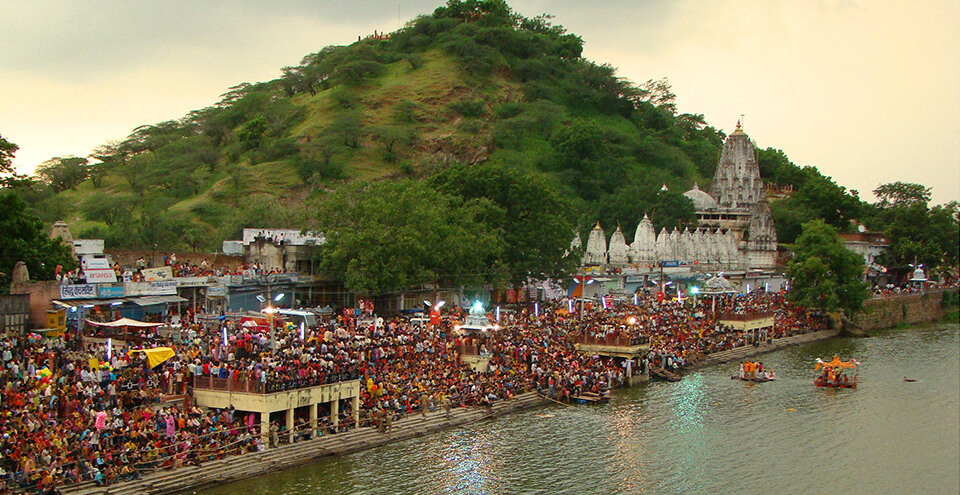
This festival is not for the men unless you’d want to get some thrashing and get married. Gavar, also known as Gangaur, is usually celebrated after Holi. The festival is exclusively celebrated by women, who adorn themselves with gold. No unmarried man is to come near these women, and if they do, they’re beaten with sticks. If the stick touches the man, it is believed, he will be married soon.
You thought India can’t celebrate love? You’re wrong. The festival, Bhagoria, is dedicated to lovers. Bhagoria, in English, means eloper. During this festival, lovers are given permission to officially run away, but not before they have applied colour on each other and eaten the betel leaf. Once they have done both, their love is accepted and they are given the permission to live together.
Celebrated in the month of February, this festival is India’s rural Olympics. Held at Kila Raipur near Ludhiana, it is being celebrated since 1933. Games such as bullock cart race, horse racing, pulling the rope, kabbadi, short put and similar such games are organised during the festival.
This festival is celebrated in the first week of May and is known as the spring festival of Nagaland. The festival marks completion of the sowing season. Dance and music form a major part of the festival.
Believed to be 1,000 years old, this festival is also one of the largest after Kumbh mela. It is also known as Medaram Jatara. Gold is offered to goddesses to honour them.
This is the largest animal fair of India. The main attraction of the fair are the donkeys and camels decorated with colors. The fair is celebrated in the holy place of Saptasangam, where seven rivers meet and devotees take holy bath. Handicrafts, food stalls, and other attractions are also a part of the fair.
This festival throws light on the atrocities meted out to the lower castes in our country. Organised at Kukke Subramania Temple, lower caste people are made to roll over the leftover food of Brahmins. The tradition has been followed for many years, and is believed to be a cure for the lower castes.
A popular fair among the Garhwalis, Gauchar Mela is a weekly fair held every year on November 14th. The Mela had started as a religio-cultural fair, but has culminated into a trade fair. Like any other fair, this too has food stalls, handicrafts, dance, music to enthrall the visitors.
Bihu as a festival is celebrated thrice in a year- January (Bhogali Bihu), April and October (Kongali Bihu). Rongali Bihu marks the Assamese new year in April. If you happen to visit Assam during Bihu, you will be treated to some delicious Assamese cuisines, mesmerising folk dance, and get a peek into Assamese culture and traditions. Not to forget, you may also be served rice-beer.
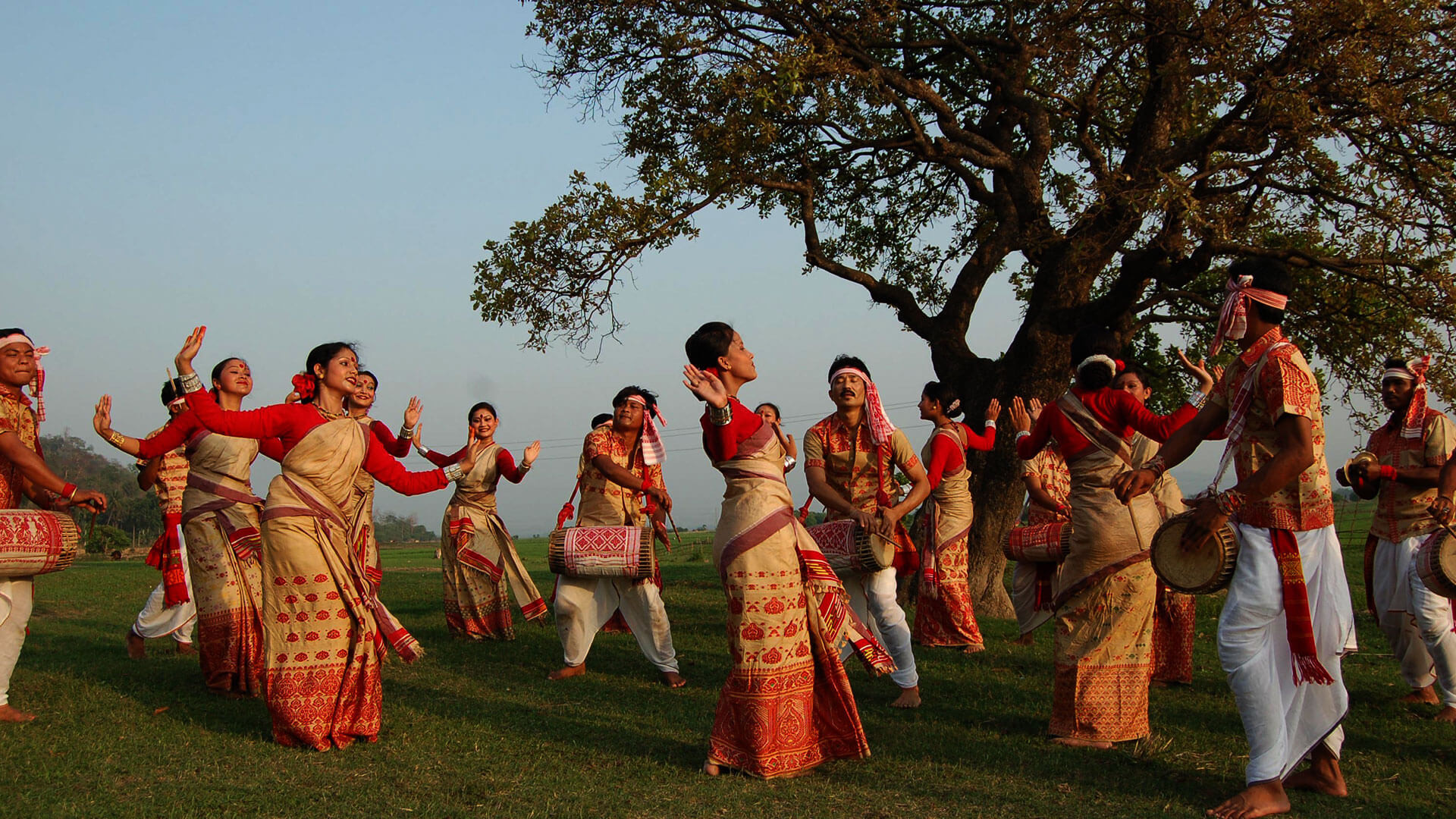
This festival is popular worldwide and is usually held in the month of July and August. The festival celebrates the history of chamba and thus is a major tourist attraction. You’ll spot localites dressed up in colorful silk costumes and offering prayer at the Laxmi Narayan Temple.
+Leave your name and email below along with what you are looking for in the message box. Or you can call us at +91 94251 57188
www.tribaltoursinindia.com © All Rights Reserved, 2021